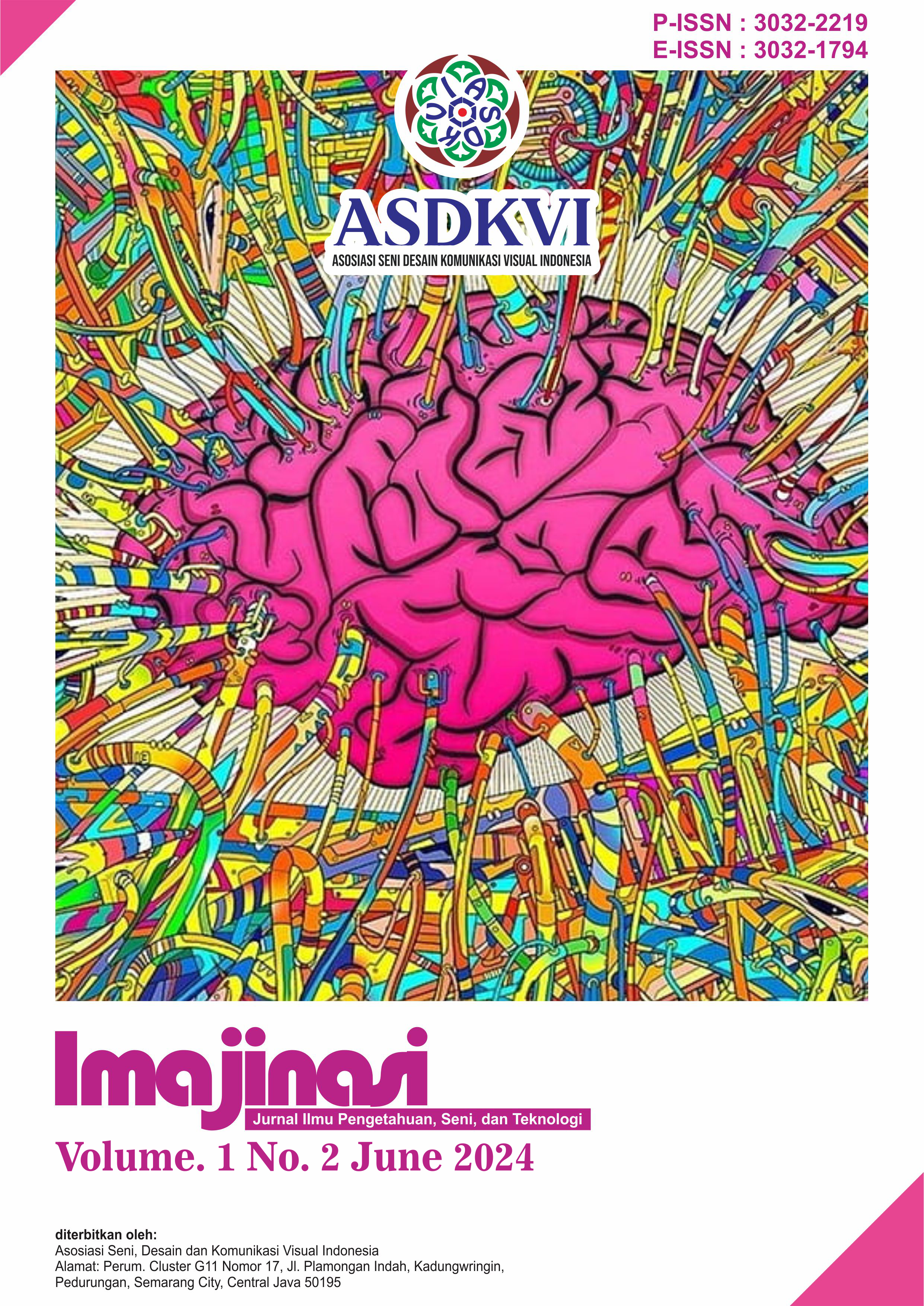Pengembangan Tari Sumbun di Kabupaten Tanjung Jabung Timur Provinsi Jambi
DOI:
https://doi.org/10.62383/imajinasi.v1i2.156Keywords:
Development of Sumbun DanceAbstract
This study aims to reveal, describe, and analyze the development of Sumbun Dance in East Tanjung Jabung Regency, Jambi Province. This type of research is qualitative research using a descriptive method. The research instrument is the researcher himself assisted by supporting instruments in the form of stationery and cameras. Data were collected through literature studies, observations, interviews and documentation. The steps of analyzing data are data collection, data reduction, data modeling, and drawing conclusions. The results of this study show that the development of Sumbun Dance can be seen in terms of quality and quantity. In terms of the quality of the development of Sumbun dance, it is seen from the movement, floor patterns, dancers, music, makeup and clothing, time and place of performance. Meanwhile, in terms of quantity, it can be seen from the addition of actors, increasing performances, expanding the performance area. The development in terms of movement of the Sumbun dance which before it was developed there were 8 types of movements and in the creation of Sumbun dance there were 11 types of movements. The musical instruments used in the Sumbun dance that were previously developed were kulintang, gong, drum, and accordion and in the Sumbun dance that had been developed kulintang, gong, drum, accordion, violin, gambus, drums, keyboard, bass, and guitar. The floor pattern is carried out by variating what was initially 8 types of floor patterns now to 10 types of floor patterns and in the form of variations. The costumes that used to be danced using Malay traditional clothes from Tanjung Jabung Timur were equipped with batik-patterned cloth songkets as well as golden iron head accessories and necklaces and men's accessories only used headbands. Now the costumes used in the creation mung dance have been packaged and created in a new form like costumes for performance events. Meanwhile, in terms of quantity, the number of Sumbun dancers who have been dancing for a long time amounted to 6.
References
Albadri, A., & Desfiarni, D. (2020). Perkembangan Tari Tampuruang Di Sanggar Sabirullah Matador Kanagarian Pasir Talang Timur Kabupaten Solok Selatan. Jurnal Sendratasik, 9(2), 39-46.
Indrayuda. (2012). Eksistensi Tari Minangkabau (Dalam Sistem Matrilineal dari. Era Nagari, desa dan Kembali ke Nagari). Padang: UNP Press Padang.
Indrayuda. (2013). Tari Sebagai Budaya dan Pengetahuan. Padang: UNP Press.
Miles, M. B., & Huberman, M. (1992). Analisis Data Kualitatif. Jakarta: Universitas Indonesia.
Moleong, Lexy J. (2012). Metodologi Penelitian Kualitatif. Bandung: PT Remaja. Rosdakarya.
Nerosti. (2019). Metafora Tari dalam Pendidikan. Padang: Sukabina Press.
Sutardi, T. (2007). Antropologi: Mengungkap Keragaman Budaya Jilid 2. Bandung: PT Setia Purna Inves.
Ubaidillah, M. (2016). Nilai-Nilai Pendidikan dalam Budaya Masyarakat Samin Desa Tapelan Kecamatan Ngrahi Kabupaten Bojonegoro Ditinjau Dari Ajaran Islam. Jurnal Uiversitas Islam Indonesia,20-21.
Widyosiswoyo, Supartono. (2004). Sejarah Kebudayaan Indonesia. Jakarta: Trisakti.
Downloads
Published
How to Cite
Issue
Section
License
Copyright (c) 2024 Imajinasi : Jurnal Ilmu Pengetahuan, Seni, dan Teknologi

This work is licensed under a Creative Commons Attribution-ShareAlike 4.0 International License.





